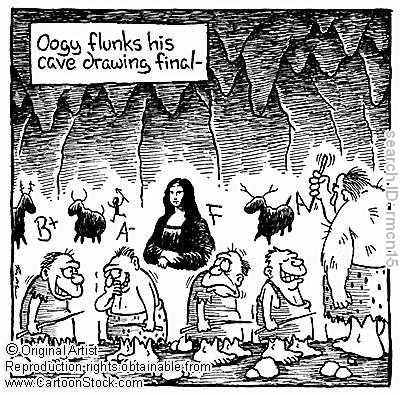I RECEIVED THE OFFER OF A TEACHING JOB, accepted it, and resigned all in the same day.
Yesterday, I opened my computer to find an invitation to teach a graduate class called Art and Culture in a New York art school’s MFA program. It meant leading a weekly 90-minute seminar on assigned readings and attending, together with students, guest lectures by artists chosen by the department.
Sounded good. The opportunity to guide and play devil’s advocate to young artists in their twenties and thirties who are committed to painting the figure appealed to me. So, yes, I hopped aboard.
To help me prepare over the summer for the fall semester, the department chair forwarded a syllabus and a required reading list. If I had seen the material ahead of time, I would not have signed on. I read things through once, twice, three times and withdrew my acceptance. The course might be called Art and Culture but the culture being promoted was not mine. Not even close. It was art world culture: semi-literate, reflexively left-leaning, and sodden with the hot new trends of the 1960s and ‘70s.
Under the heading of seminal authors appear Marx, Freud, Lacan, Adorno, Baudlelaire, Guy DeBord, Althusser, Foucault, Derrida, Roland Barthes, Kaja Siverman and Slavoj Zizek. The names are all you need to see the drift of the department. Readers will recognize most of the names here. Let me clarify just two.
Slavoj Zizek (b.1949) is a Slovanian philosopher and spear carrier for Marxist economics and Lacanian psychoanalysis. He is also a self-described atheist with Maoist inclinations. In a 2006 essay in The New York Times, he wrote this:
Today, when religion is emerging as the wellspring of murderous violence around the world, assurances that Christian or Muslim or Hindu fundamentalists are only abusing and perverting the noble spiritual messages of their creeds ring increasingly hollow. What about restoring the dignity of atheism, one of Europe’s greatest legacies and perhaps our only chance for peace?
In Zizakworld, Christians are wreaking bloody havoc every bit as much as Muslims. Maybe 9/11 was not the work of Swedish Lutherans, Southern Baptists or Irish Catholics, but give them time. Our only chance for peace lies with the atheism that gave such luster to slaughter in the 20th century. Let’s hear it for the atheism of Hitler, Stalin, Pol Pot, and some others.
Precisely what Zizak does with Lacan, I cannot say. I doubt any MFA candidate can either. Lacan was deliberately obscure to the point of unintelligibility. In his writing, he delights in sophisticated word play that resists translation. Non-native speakers beware. But apart from that, just what Lacan’s theories about psychoses, neuroses and perversions have to do with the language of painting, beats me. (I suspect perversions are the main draw for contemporary faculties.)
Guy DeBord is, like others here, a Marxist theorist. The burden of his The Society of the Spectacle leans on Daniel Boorstein’s The Image: A Guide to Pseudo-Events in America. Boorstein’s book created a storm when it was published in 1961. It was translated into seven languages. The French edition proved useful for DeBord. He followed six years later with the same thesis but dressed to the nines in fashionable Marxist phraseology (commodity fetishism, alienation, et alia).
Boorstein, a non-Marxist pioneer of DeBord’s pensées, does not make the reading list. Nevertheless, in coining the phrase pseudo-event, he acknowledged modernity’s (modern American, in this case) substitution of the artificial—DeBord’s spectacle—for reality. It is a gem of a book, still current, that details how each one of us “provides the market and the demand for the illusions which flood our experience.”
One of those unshakable illusions is that an MFA degree is needed to create significant art. The course material—only partially referenced—above, sends the false message that MFA graduates are Continental intellectuals. That is a dubious category to begin with but absolutely lethal for young painters. It delivers them up to what Jacques Maritain termed “aesthetic clericalism, assuredly the most pernicious of all forms of clericalism.”
© 2010 Maureen Mullarkey



